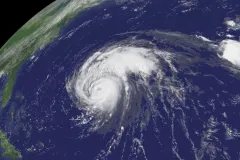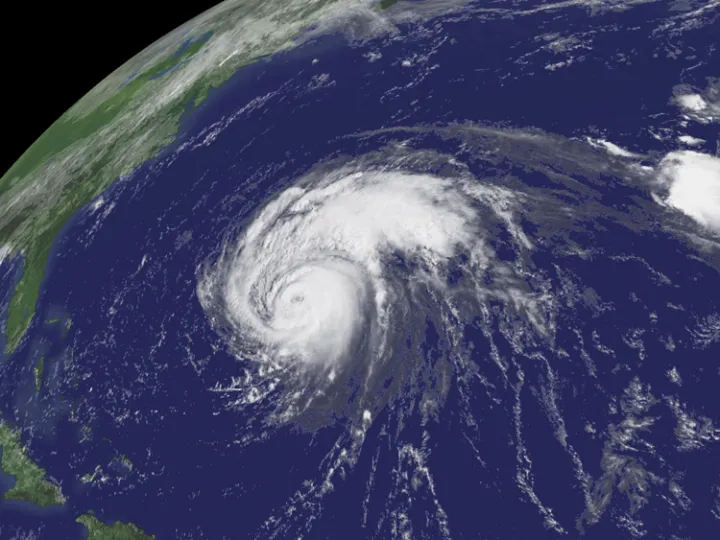The Ingredients for a Hurricane

I became interested in weather phenomena when I took physics in high school. At the time, I just wanted to understand how various things in nature worked. Unfortunately, most information about weather and hurricanes, whether in textbooks or on television, is merely descriptive: this is the sequence of events that we observe, and they lead to a hurricane. There is usually very little explanation of why it’s happening or the physics behind it.
But, if we want to predict what a hurricane is going to do tomorrow or in the next few days, we have to understand the physical processes—from the microscopic to the global—that control its behavior. Now, as a professor and research scientist at the University of Rhode Island’s Graduate School of Oceanography, I study these very processes.
From a physics standpoint, a hurricane is a heat engine. It’s a massive, natural machine for converting heat energy into mechanical energy—in this case wind. That heat energy is derived from the ocean. When seawater evaporates from the surface, it takes heat with it. As the rising water vapor reaches clouds an incredible amount of heat is released, warming the air and driving the hurricane’s circulation. In fact, the total amount of heat energy being pumped into an average hurricane is equivalent to about half the worldwide electrical generating capacity!
Recognizing this relationship between the ocean and the atmosphere and understanding the physics behind hurricanes allows researchers to build computer models to predict a storm’s behavior. But hurricanes are complex, and there are many ingredients in the recipe for any given storm.
To predict hurricane intensity, for example, we have to know how the transfer of heat through the ocean surface is affected by wind speed. Scientists still have much to learn about what happens on the water during high winds, but everything we know so far suggests that sea spray is fundamentally important. In a hurricane, enormous amounts of spray are lofted into the air. When a spray droplet rises and partially evaporates, it gets very cold before falling back to the ocean. This process, it turns out, transfers an enormous amount of heat to the air, helping to drive the brewing hurricane.
When winds start to flow more than about 80 or 90 miles per hour (130 to 140 km per hour), so much spray is lofted into the air that, eventually, it becomes hard to even talk about the surface of the ocean. And I'm not speaking metaphorically. The air is filled with spray droplets, the water is filled with bubbles, and there's no longer anything you can truly call the “surface” of the ocean. In the core of a hurricane, there is chaos.
While computer models are important tools for predicting hurricane behavior, they are far from perfect. One primary reason is that current models do not do a good job of forecasting wind speeds. The effect of sea spray and other riddles of hurricane physics, are high priority research areas in the science community. The more we study the ingredients that go into hurricanes, the better we will become at predicting their paths of destruction.
Learn more about hurricanes by visiting Hurricanes: Science and Society, a new, multi-media site from the University of Rhode Island and the National Science Foundation.


